Soon after the Normandy invasion on 6 June 1944, the Allies became concerned the Nazis had created an elite Schutzstaffel (SS) underground organization to continue fighting after the Germans were defeated. This secret organization was named “Werwolf.”

No one knows how and why Werwolf was used as the name for Reichsführer-SS Heinrich Himmler’s guerilla resistance force. However, there are perhaps some dots we can connect.
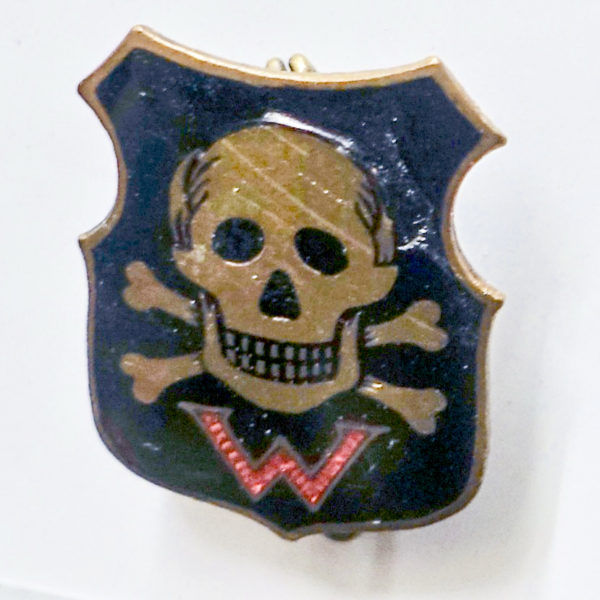
Hitler named his Ukraine field headquarters, Werwolf and on occasion, Hitler would refer to himself as “Wolf.” His Eastern Front military headquarters was known as Wolfsschanze or, Wolf’s Lair. A novel written in 1910 by Hermann Löns was Der Wehrwolf. It was a story of revenge whereby a group of men called Wehrwölfe became mercenaries and eventually began to enjoy killing people. The book became popular with the German right-wing so naturally, the Nazis embraced it.
Did You Know?
Did you know that the Place de la Concorde in Paris was once a giant sundial? Most of us are aware of the three-thousand-year-old Luxor Obelisk that stands in the center of this giant roundabout. It was given to France in 1833 by the ruler of the Ottoman Empire, Muhammad Ali. All the Pasha wanted in return was a big mechanical clock for the Citadel in Cairo ⏤ it’s there but reportedly, doesn’t work. While you walk around the Place de la Concorde, look down at the pavement and you might see Roman numerals. The founder of the Société de France, Camille Flammarion, decided to create the largest sundial in the world and in 1913, plans were drawn up to use the Obelisk as a gnomon (the pin of a sundial). Unfortunately, it wasn’t until 1999 when the plans were finally approved by the mayor of Paris and the sundial was created. Time was not kind to the Paris sundial and by 2001, most of the pavement imprints had faded or worn away. However, there still are some numerals left and if you look closely at certain times of the day, the Obelisk can tell you the time. I think I’ll rely on my trusty Seiko watch. If you’d like to explore more about the history of the Obelisk, please be sure to read our next blog (7 December 2019), Cleopatra in Paris and Full Frontal Baboons (click here to read). We’ll also talk a little bit about our recent trip to Egypt where we saw the Paris Obelisk’s twin.

Unternehmen Werwolf
Heinrich Himmler, head of the Gestapo and the SS, decided to form the Unternehmen Werwolf or, Operation Werwolf in late 1944. The purpose of this secret volunteer force was to operate behind enemy lines. Himmler envisioned them to be similar to the Allied Special Forces known as “Commandos.” SS Obergruppenführer Hans-Adolf Prützmann (1901-1945) was assigned the responsibility of organizing and training Operation Werwolf volunteers. Prützmann was a veteran of fighting Soviet guerilla soldiers and partisans in the Ukraine and he intended to use their guerilla tactics in training his Werwolf men and women. Prior to the Werwolf campaign, Prützmann, a fanatic Nazi, led the mobile extermination group, Einsatzgruppe A, which murdered thousands of Latvian Jews and Ukrainian civilians. Watch the movie clip SS Werwolves – The True Story here.

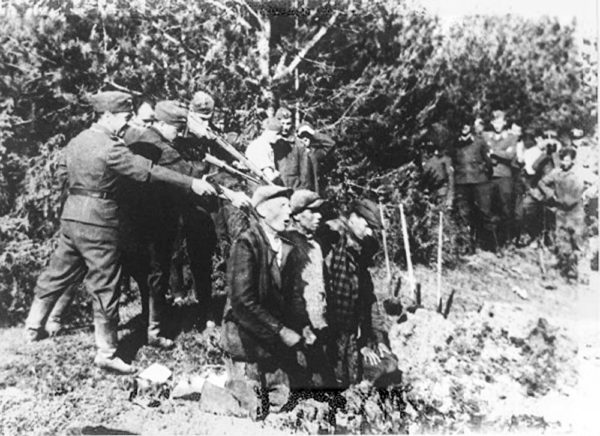
Prützmann’s goal was to train soldiers, civilians, adolescent boys and girls, and non-party people to kill enemies and German collaborators. They were to poison the water and food supplies, blow up communications, and commit sabotage of varying degrees in case of Germany’s defeat. Prützmann recruited some of the most ruthless Nazi officers to assist him including SS General Jürgen Stroop (1895-1952), the Nazi responsible for the destruction of Warsaw’s Jewish Ghetto and murders of thousands of Jews (read the blog The Nazi Frankenstein here). It was the intent to model the Werwolf operation on the Polish underground resistance which the Nazis considered to be the most advanced resistance network in any of the occupied countries.
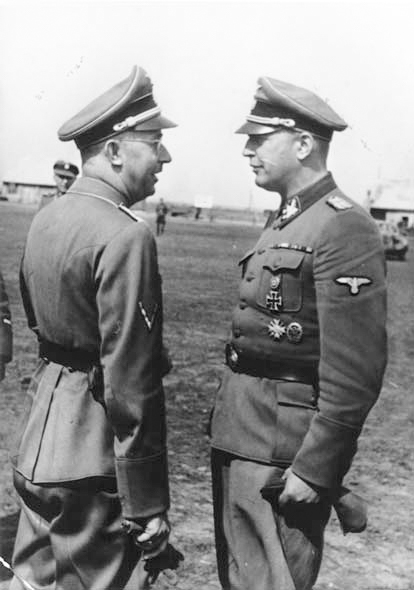
The screening of the applicants for Werwolf became the responsibility of the Gauleiters (leaders of regional branches of the Nazi party) in Moselland, Westmark, and Hesse Nassau. The only criteria to become a Werwolf was a complete trustworthiness and a desire to be part of a post-war resistance conspiracy. While there were no age limits or gender requirements, most of the volunteers were young men. The majority of Werwolf officers came from the officer corps of the SS, Hitler Youth, and former Sturmabteilung (“SA” or, Brownshirts). Patrol leaders went to schools specializing in drill, physical education, map reading, use of various weapons, and demolition techniques.
Patrol groups consisted of four members who were given small metal identification plates inscribed with “SS Wkr XII” and a number. Maps with designated targets or objectives were issued. Each patrol group was expected to find and maintain three concealed places: cave, mine shaft, and quarry. Each “hideout” was to be stocked with food, ammunition, explosives, and sabotage equipment. By the end of 1944, Prützmann had recruited and trained more than 5,000 young Werwolves.
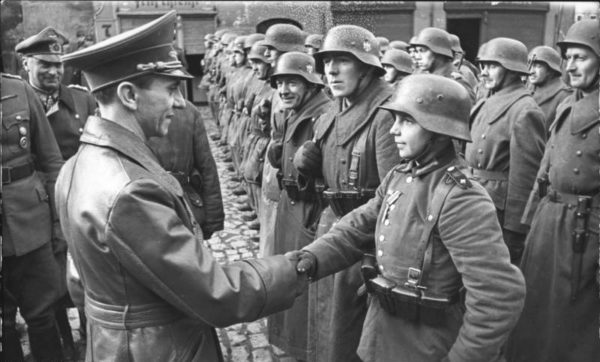
Operation Carnival
On 21 October 1944, Aachen, the medieval capital city of the Holy Roman Empire, became the first German town occupied by the Allies. Only four thousand citizens remained in the heavily damaged city that day. The Allies appointed Franz Oppenhoff (1902-1945) as the new mayor. Oppenhoff had been an ardent anti-Nazi and was quite adept at surviving his enemies’ attempts to arrest and deport him.
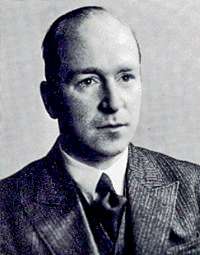
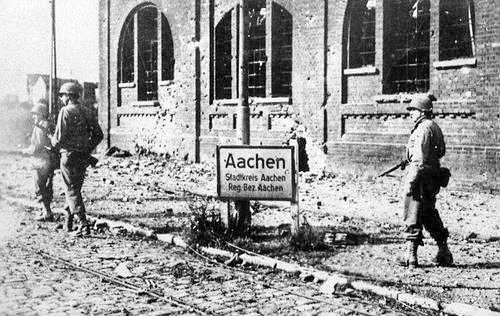
Hitler was furious when he learned about Oppenhoff’s mayoral appointment. It was considered to be collaboration with the enemy and an act of treason. Hitler ordered Himmler to have Oppenhoff assassinated ⏤ what better opportunity to try out the Werwolf? In November, Prützmann was given his orders and the mission’s code name became Unternehmen Karneval or, Operation Carnival. Watch the Smithsonian movie clip These Assassins Were The Nazis Last-Ditch Effort here.
The six team members included four SS men and two members of the Hitler Youth: sixteen-year-old Erich Morgenschweiss and Ilse Hirsch, a twenty-two-year-old female member of the Hitler Youth Movement. On 20 March 1945, the six parachuted into an area where they would begin their walk to Aachen but not before killing a young Dutch border guard. Arriving in Aachen, Hirsch acted as an advance scout and on the evening of 25 March, two of the SS men went to Oppenhoff’s home and put a bullet into his skull. Oppenhoff’s assassination made headlines throughout the world. Goebbels broadcast from Radio Werwolf on 1 April 1945 and informed the world the Germans had a secretive tribunal system to carry out vigilante death sentences. Prützmann ordered every loyal Nazi to assassinate all the Bürgermeisters in Allied-held territories. Escaping from Aachen, the trigger man blew himself up after tripping a land mine while Hirsch walked into a trip wire and the explosion tore open her leg while also injuring the rest of the team. They left her in the field to die and the next morning, Morgenschweiss couldn’t go on due to his injuries. After the war, four of the five survivors were brought to trial (Morgenschweiss wasn’t indicted). Hirsche was acquitted while the other three received light prison sentences.
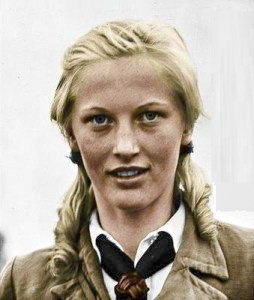
Captured Werwolves
Arming the Werwolf organization looked good on paper but in reality, the equipment, arms, ammunition and other necessary supplies never reached the Werwolf men and women. It was near the end of the war and munitions production had virtually come to a halt while German military units including the SS were not going to share their arms or ammunition.
In early 1945, SS Obersturmbannführer Otto Skorzeny was assigned to train Werwolf recruits. He immediately knew the number of Werwolf cells had been exaggerated and he believed the recruits would be ineffective. However, Skorzeny knew the war was lost and he believed the Werwolf teams could be used to establish and facilitate underground “rat lines” for the purpose of assisting SS men to flee Germany after the war. (read Odessa: Myth or Truth? here).
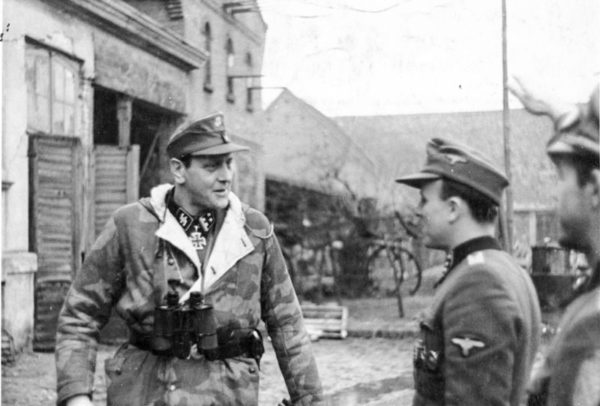
By late April 1945, the Allies began capturing Werwolf men and interrogating them. They quickly came to believe that the Werwolf operation did not pose a material threat to the Allies in the waning days of the war. Goebbels’s propaganda did more damage than actual Werwolf activities. In retrospect, the likelihood of Hitler and his generals agreeing to set up Werwolf as a resistance network in case of a German defeat is highly unlikely. Hitler and others considered anyone who discussed defeat as a traitor and defeatist.
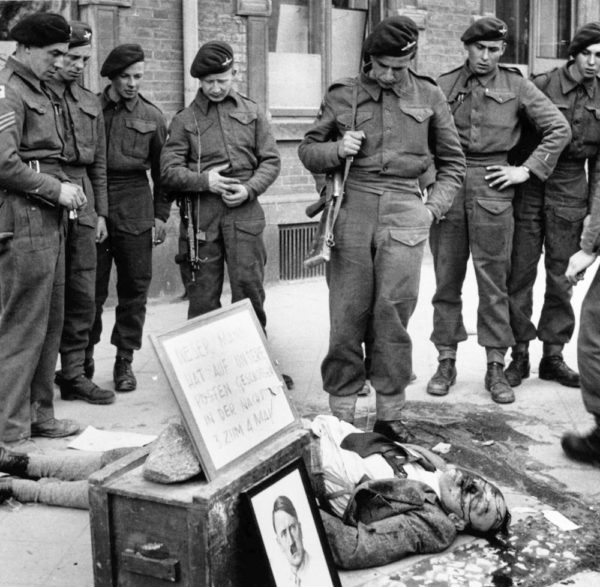
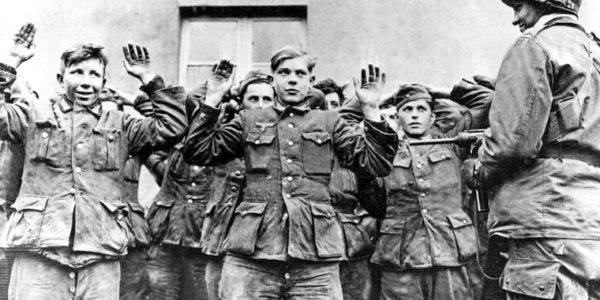
The Last Werwolf Stronghold
Prützmann was staying in Schleswig-Holstein, near the Danish border when Germany surrendered. Now that German defeat was a reality, it was time for the Werwolf troops to take action as they had been trained to do. Prützmann headed for Bremen and then south where he intended to build a Werwolf stronghold. He was stopped by the British near Bremervörde at a control post and arrested. Prützmann was eventually identified and taken to Lüneburg, Germany. On 21 May, the leader of the Werwolf committed suicide by biting into a cyanide capsule. Ironically, Himmler had followed Prützmann’s path in an effort to reach the Alps. Along the way, Himmler was captured, taken to Lüneburg where he confessed his identity and committed suicide on 23 May in the same room that Prützmann had died in two days earlier and in front of the same guard.
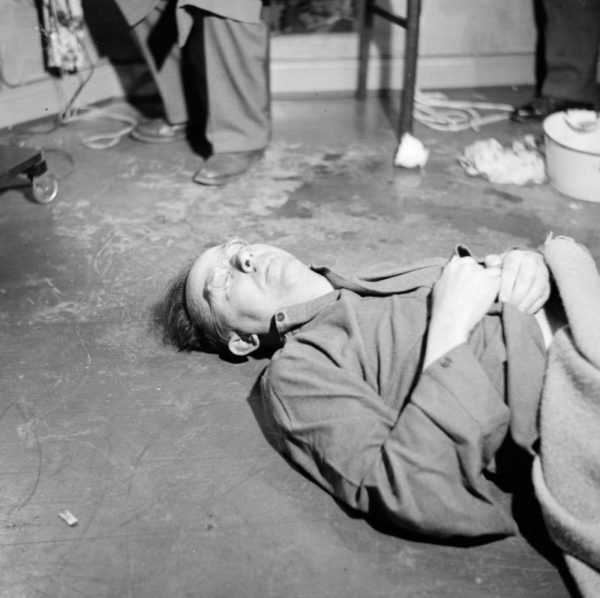
On 9 May 1945, Stroop and his cronies took off their SS uniforms and replaced them with Wehrmacht uniforms hoping to “blend” in with ordinary German soldiers. After abandoning his Werwolf troops, Stroop surrendered to Allied forces in the Alpine resort of Rottau. Stroop was eventually convicted of crimes against humanity and hanged.
The Werwolf resistance movement fizzled out and never achieved any of the goals set by Himmler and Prützmann.
Alternative View
While it is generally accepted that the Werwolf organization never posed any threat to the Allies, one author has a different view. Perry Biddiscombe (see below) believes the Werwolf cells existed until possibly 1950. They retreated to the Black Forest and Harz mountains where they operated as nomad bands. He admits their activities were “minor.” However, by the summer of 1945, the Americans and British had effectively written off the Werwolves.
✭ ✭ ✭ Learn More About Nazi Werwolves ✭ ✭ ✭
Biddiscombe, Perry. Werwolf! The History of the National Socialist Guerrilla Movement, 1944-1946. Toronto: The University of Toronto Press, 1998.
Heath, Tim. In Hitler’s Shadow: Post-War Germany & the Girls of the BDM. Yorkshire: Pen & Sword Books Limited, 2018.
Lucas, James. Kommando (part 4). London: Cassell Military Paperbacks, 1985.
Moczarski, Kazimierz. Conversations with an Executioner. New Jersey: Prentice-Hall, Inc., 1981.
Whiting, Charles. Hitler’s Werewolves: The Story of the Nazi Resistance Movement, 1944-1945. New York: Stein and Day, 1972.
What’s New With Sandy and Stew?
Well, we made it back safely from Egypt. Speaking of safety, everywhere we went, we were accompanied by armed guards with locked and loaded machine guns hidden by their suit coat. Many times, our escort vehicle was either a police car or if we were on the Nile, a police boat. The Egyptians were very friendly, and it was a lot of fun “haggling” with the vendors. The number two industry in Egypt (behind the Suez Canal) is tourism. We were told that after the 2011 uprising, tourists stopped coming to Egypt for five years. It has only been in the last several years that tourists have returned. Sandy and I each bought a “galabeya” or, traditional Egyptian garment native to the Nile Valley. We wore our galabeya on board the ship for Egyptian Night. One of our complaints about traditional ocean cruises is that the cuisine tends to be very American and less focused on the native foods of the country or countries we are visiting ⏤ not so on our Egypt trip. Every meal was about ninety-percent Egyptian which equated to spicy (very similar to Mediterranean cuisine). For us, that was great since we love spicy food and eat it all the time. However, many of our fellow passengers’ stomachs weren’t prepared for this type of food and they did suffer. More on our trip with the next blog (7 December), Cleopatra in Paris and Full Frontal Baboons (Click here to read).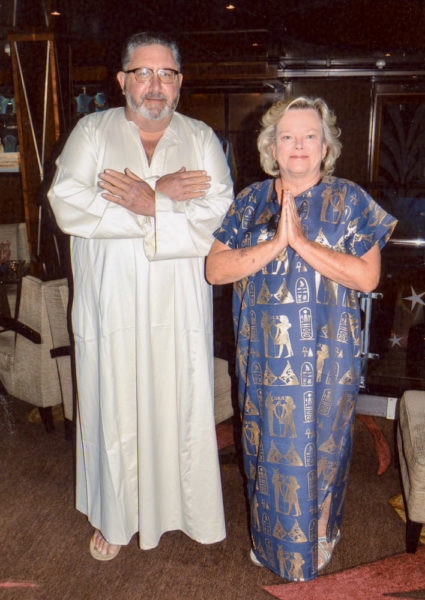
Someone Is Commenting On Our Blogs
I’d like to thank Amalia H. for reaching out to us concerning the blog, Cycling to Save Jews (read here). Amalia is an author of children’s books and her newest book, The Brave Cyclist: The True Story of a Holocaust Hero, was published in August 2019. As I told Amalia, I hope more books are written like The Brave Cyclist (click here for the book) for children aged eight to twelve. Perhaps Amalia can find a future book story from one of our blogs.
If there is a topic you’d like to see a blog written about, please don’t hesitate to contact me. I love hearing from you so keep those comments coming.
Why Would You Want To Buy Our “Walks Through History” Books?
Simple.
You like to travel and experience history and historical events. You like to see original buildings that had a significant impact on the people and events of the history you’re engaged with. You want to know the stories behind the brick and mortar in front of you.
The walking tour books are meticulously researched so you can go directly to those sites and learn about the building’s history as well as an introduction to some of the more interesting people associated with it.
We Need Your Help
Please tell your friends about our blog site and encourage them to visit and subscribe. Sandy and I are trying to increase our audience and we need your help through your friends and social media followers.
Thank You
Sandy and I appreciate you visiting with us. We have some exciting things on the horizon and we’ll keep you updated as we go along.
Share This:
Follow Stew:
Find Stew’s books on Amazon and iBooks.
Please note that we do not and will not take compensation from individuals or companies mentioned or promoted in the blogs.
 Walks Through History
Walks Through History
Copyright ©2019 Stew Ross

One of the photos above shows no Werwölfe (werewolves) but Kindersoldaten (child soldiers), of which there were very many in 1944/45. The photograph of Goebbels shaking hands with Kindersoldat too shows no Werwölfe. You should point it out / mention that. Image sources as well as written sources should be dealt with critically.
The theories of Biddiscombe more match the typical fairy tales of the Schwarzwald (black forest) that have been told in Germany for a long time. He vastley overestimates the influence of the Werwolf. This realy is not a critical view on history, it is more that, what is called myth-making. like the myth, Hitler could have escaped with a submarine.
Thank you Torben for your suggestion regarding the two captions. I can see where there might be some confusion about the Kindersoldaten being mistaken for the Werwölfe. I appreciate you pointing that out. I hope you enjoy our bi-weekly blogs. STEW